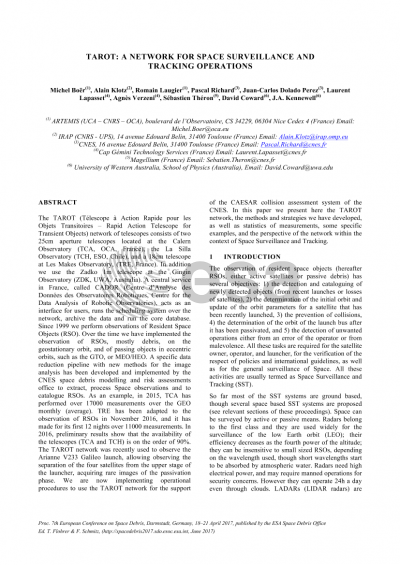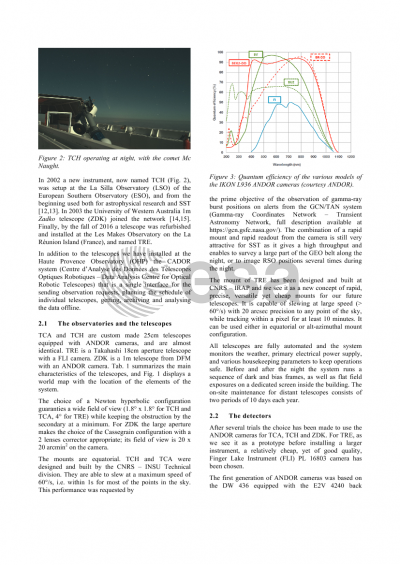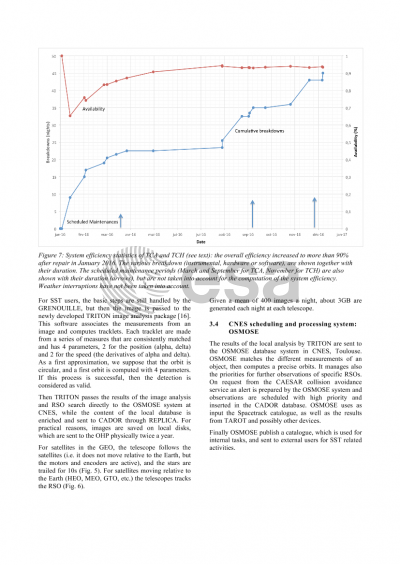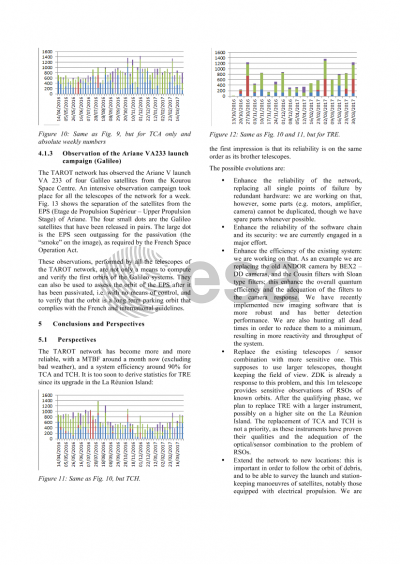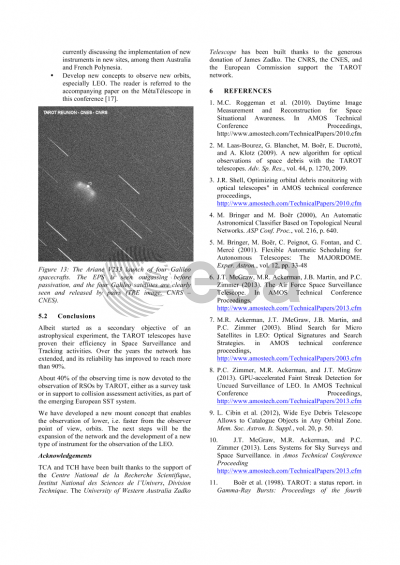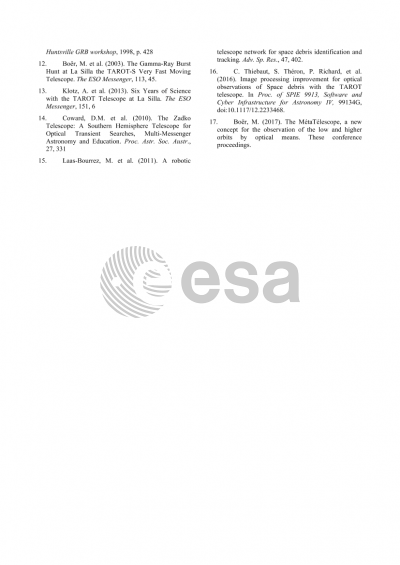Document details

Abstract
The TAROT (Télescope à Action Rapide pour les Objets Transitoires – Rapid Action Telescope for Transient Objects) network of telescopes consists of two 25cm aperture instruments located on the Calern Observatory (TCA, OCA, France), the La Silla Observatory (TCH, ESO, Chile), a 18cm telescope at Les Makes Observatory, (TRE, France). In addition we use the Zadko 1m telescope at the Gingin Observatory (ZDK, UWA, Australia). A central service in France, called CADOR (Centre d’Analyse des Données des Observatoires Robotiques, Centre for the Data Analysis of Robotic Observatories), acts as an interface for users, runs the scheduling system over the network, archive the data and run the core database. Since 1999 we perform observations of Resident Space Objects (RSO). Over the time we have implemented the observation of RSOs, mostly debris, on the geostationary orbit, and of passing objects in eccentric orbits, such as the GTO, or MEO/HEO. A specific data reduction pipeline with new methods for the image analysis has been developed and implemented by the CNES space debris modelling and risk assessments office to extract, process Space observations and catalogue RSO.
As an example, in 2015, TCA has performed over 17000 measurements over the GEO monthly (average). TRE has been adapted to the observation of RSOs in November 2016, and it has made for its first 12 nights over 11000 measurements. In 2016, preliminary results show that the disponibility of the telescopes (TCA and TCH) is on the order of 80%.
The TAROT network was recently used to observe the Arianne V233 Galileo launch, allowing observing the separation of the four satellites from the upper stage of the launcher, and possibly acquiring rare images of the passivation phase.
We are now implementing operational procedures to use the TAROT network for the support of the CAESAR anti-collision system of the CNES.
On this paper we present here the TAROT network, the methods and strategies we have developed, as well as statistics of measurements, some specific examples, and the perspective of the network within the context of Space Surveillance and Tracking.
Preview
